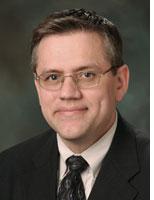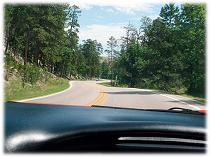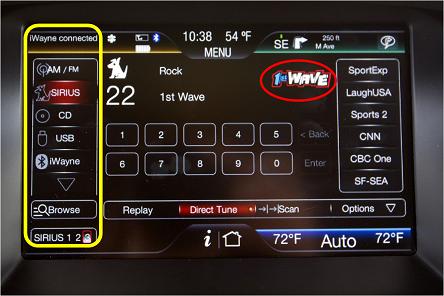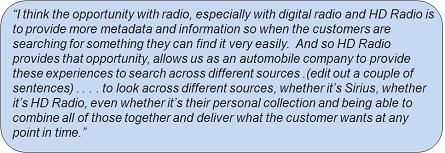It’s a weird thing about HD Radio. Like the topic of abortion on Talk/Radio, it is guaranteed to bring out extreme reactions. So while I’m expecting the usual negative comments from the usual naysayers, I hope the rest of you take a few minutes to read and consider today’s post.
It’s about HD Radio from a different perspective: the view from car makers, automotive engineers, and marketers.
Regular readers of this blog know that Paul and I made the trek to Las Vegas this month with a different plan for attacking CES. Last year, we simply took in the show, walking the floor to get a sense for the hot new gadgets, the vibe, and just how this convention is so different from what we’d ever seen before.
And we came away with a renewed respect for CX – the Customer Experience, a philosophy espoused by Ford, Verizon, Time Warner, and scores of other major electronics brands.
This time around, we had a different mission – to get a sense for what is happening with cars, entertainment, information, and the new dashboards – or as I am calling them, “moving desktops.”
And CES cooperated by gathering most of the automotive companies together in the North Hall of the Las Vegas Convention Center. We walked from brand to brand, also taking the time to talk to some of the smaller companies marketing innovative ways to hook up smartphones in older model cars.
The results of our trip to CES and videotaped interviews will be presented later this year. But in our journey to learn more about how the automakers conduct research and then prioritize which apps, brands, and media to include in their systems, we learned something else:
HD Radio is generally perceived as a positive – a digital entrance requirement to these in-dash systems for broadcast radio.
The people we spoke to at CES obviously don’t read radio trades. They tend to view HD Radio as a digital gateway that provides continuity with the other offerings on their system desktops.
Here’s Ted Cardenas, director of Marketing/Car Electronics Division of Pioneer, on where broadcast radio fits into his company’s plans:
Then there’s that new Cadillac system – CUE. We ran a highly visited post a few weeks ago that included a video demo. At CES, we were able to speak to Cadillac’s Senior Creative Designer, User Interface for CUE, Scott Martin. Here’s his “take” on HD Radio and his brand:
 Many of you have read about Ford’s Jim Buczkoswki (pictured), a leading voice at Ford. Jim is a Henry Ford Technical Fellow and director of Electrical and Electronic Systems, Ford Research and Innovation.
Many of you have read about Ford’s Jim Buczkoswki (pictured), a leading voice at Ford. Jim is a Henry Ford Technical Fellow and director of Electrical and Electronic Systems, Ford Research and Innovation.
Buczkowski and Ford aren’t just throwing together lots of disparate parts into SYNC. They take a holistic approach and speak to creating great experiences and creating competitive differentiation. Part of the goal with SYNC and MyFord Touch is to create the ability to search across the various sources – from satellite radio to an iPod to a broadcast radio station – to find content, information, and entertainment. In short, options that will personalize the in-car experience.
So where does HD Radio fit in? Well, you can see the problem in a system like SYNC when you compare the look and feel of satellite radio, for example, to the typical AM/FM experience. With the former, you get logos and clean artist and title information. With most broadcast radio, RDS is a mess and the overall appearance is substandard compared to what the consumer experiences from other sources. Here’s Buczkowski:
Finally, another after-market view, this time from Jacob Hardin, National Product Supervisor from JVC. His company views HD Radio and its features as a way to stay ahead of the OEM’s. Here’s how he sees the competitive landscape:
Our Techsurvey8 – which will be presented at the Worldwide Radio Summit in April – will represent thousands of radio listeners from more than 170 participating stations’ email databases. In other words, core P1-heavy radio consumers.
The study will help us quantify the impact of in-car systems like SYNC and Entune, while measuring interest in future options.
The battle for attention in the dashboard will be a major challenge for traditional broadcasters. It is no longer conventional warfare in vehicles where all you had to do was win a pushbutton for your station, and compete against a cassette or CD player.
Moving forward, radio has to be on its game with both its content and its technical presentation, or get squeezed out by a myriad of digital competitors. As you’ve heard the auto execs, designers, and marketers say, HD Radio is broadcast radio’s way forward.
So there we are. The radio industry has had its ups and downs with HD Radio, its false starts, and its disappointments. The recent study from Mark Kassof suggests that consumer awareness for HD Radio has stalled. From commitment to marketing to technical issues to consumer interface, it’s been a tough, uphill climb, and our company has shared in the frustration with the Alliance and iBiquity, trying to move the ball forward.
 But if broadcast radio peers out the windshield and takes a long, hard look at where in-car listening is going – the last location it can dominate – it may have to make some difficult choices about the future.
But if broadcast radio peers out the windshield and takes a long, hard look at where in-car listening is going – the last location it can dominate – it may have to make some difficult choices about the future.
As we have symbolically implored radio to consider Detroit for a future NAB/RAB Radio Show, the powers that be in broadcast radio would be wise to spend more time thinking about radio’s storied relationship with the car, as well as the industry’s reliance on automotive advertising.
Mistakes have been made with HD Radio. But now the car industry’s commitment to electronic information and entertainment opens the door to radio participation that can ensure a healthy future.
Let’s drive.
- In Radio, You Just Never Know - April 17, 2025
- The Secret To Making A Great Podcast (And Great Radio) - April 16, 2025
- I Read The (Local) News Today, Oh Boy! - April 15, 2025









Thank you for an excellent post!
Clearly the future of any kind of radio is mobile, and radio will become an out-of-home medium in a very short time. Hopefully those who understand what HD Radio can do will work towards making the product better, improving the metadata, and promoting understandable benefits of the technology. That kind of mindset has to start at the top of the radio groups and go all the way down to the part timer ripping songs into the automation system and making sure all the data that needs to be displayed is added when the song goes in.
It’s a tall order, but the few owners with vision can make it happen.
Totally agree. HD Radio has become a very sticky issue and the commitment to it by broadcasters have been checkered. A trip to the floor of CES – or even a local automobile dealer showroom floor – might provide more incentives. Thanks for reminding us that initiatives don’t happen – they require commitment, goals, resources, and buy-in.
Not only did Buczkowski fail to disclose that Ford is an investor in iBiquity, his letter to broadcasters sounded especially threatening to non-HD broadcasters, just like this post. Fact is that for including HD Radio as standard, both Volvo and BMW have outstanding Technical Service Bulletins against HD Radio. Fred, have you ever gone through the various automaker HD Radio forums, and read all of the complaints, and questions on how to disable HD Radio? I have called a number of dealerships that supposedly offer HD Radio, and none of them admitted to such. Either they truely don’t offer it, or they simply are not advertising it. At some point, this will catch up to iBiquity. The automakers would never stop including radio, just because it isn’t HD. Analog radio will always be much more robust than HD (with all of its failed bandaids).
Greg, thanks for chiming in. I expected your perspective and you did not disappoint. As I mentioned, the technology, adoption, and commitment have all had issues since Day One. But if you would have been with me walking around CES (you might have asked different questions than I did), you might have gotten a different POV. Thanks as always for your input.
There are so many downfalls with HD Radio, that adding it to the dashboard will only antagonize listeners further. In the image above, the listeners don’t care if that AM/FM button is a link to digital or analog radio. The only potential extra capability of HD Radio is being able to display an image, probably a pixilized version at best. Most HD stations don’t even bother with tagging, or image art. Analog has RDS and tagging capabilities, just as HD Radio. Listeners want good content, not hookey stuff. And, HD Radio really doesn’t offer more “radio stations”, as adjacent-channel stations are lost in HD Radio hybrid-mode due to interference.
Radio hasn’t given the public any reason to embrace HD radio. Scant resources have been applied there and the programming quality, with very few exceptions doesn’t measure up to terrestrial radio or the best pure play webcast options. Add to that the reception issues and their are real hurdles to climb.
The good news is that there is very little awareness so a relaunch would be easy. That should include a real commitment to competitive programming that would include all the tools radio uses to launch terrestrial stations.
The only important naysayers here are the general public who up til now have given HD radio a clear thumbs down. To say that interest has stalled only tells half of the story – its stalled at close to zero. This is a classic case of getting out of something what you put into it. If radio decides to devote the kind of resources that typically accompany a successful product launch, it might succeed with HD. But that requires a plan, with goals, resources, measurement and gut checks.
What recommendations would Jacobs Media to a terrestrial station that sounded like a typical HD station? That’s the blueprint for success.
Yours Truly,
Mr. Naysayer
Bob, your opinion no doubt echoes many out there who may not be as candid or honest. The burden is on radio in all of these areas, but the potential to have a viable presence on the vehicles of the future ought to be sufficient incentive. Thanks for continuing a necessary conversation, and thanks as always for reading and contributing to this blog.
It was just a matter of time until we saw the Ford commercial with Kelly Clarkson pressing a “Pandora” link in her new Ford. Wifi and cars with built in cell capability will only add to the mix of competitors. I believe people will listen to “the best” regardless of what media it is on providing they have access to it. This will surely move traditional broadcasters to vamp up their websites and streaming also. Content has always driven radio and even record sales. Less than “Quality” will most likely not be tolerated by the consumer in any media.
Anthony, thanks for the feedback. There’s no question that radio needs to step up and provide an experience that at least equals what consumers are receiving from other media. Whether “radio” or not, broadcasters are competing for “mindshare” with many new sources, and consumers are taking note. We appreciate you reading the blog and taking the time to provide your perspective.
I have felt an odd resurgence with HD even within the last 3-6 months. For the first time we are seeing auto manufacturers placing the radio into production and getting it in the hands and on the ears of listeners en mass for the first time. Will HD be the thing that totally changes our industry? I doubt it…but it provides us with the ability to be a key part of the moving desktop.
Now…if we can only get the pricing down to get more stations on board.
Joe, there are lots of roadblocks and speed bumps along the way for HD Radio and you hit one just one. But at CES we saw the larger possibilities. Thanks for taking the time to add your thoughts.
I can’t believe that anyone still writes about HD, it’s as dead as it always has been, why don’t you guys just let it slink off to it’s rightful place next to the 8 track machine?
Bob, I appreciate your opinion, but maybe you’d be inspired by a visit to CES, as modern an event as it gets. Talk to those guys and see what you think. Just a thought. Thanks for writing.
In our application I am quite excited with HD performance. In our town our company operates 3 broadcast formats spread over a class C and a couple class A stations. To acheive distant coverage with our two small stations, we run those two class A’s on the HD 2 and HD 3 channels of our class C station. We also have distant HD repeater stations for our class C. Now people far outside our market can walk around with a little $40 portable HD radio or drive the streets tuned in on a new car radio and listen to all three of our stations, where previously they would only have been able to hear our flamethrower. In our case, we already were programming extra formats. What we needed was better coverage for our relatively low powered, though very well-liked, stations. It works!
Richard, thanks for the note and telling your story. Appreciate you taking the time and reading our blog.
I am the Director of HD Radio for Emmis St. Louis. For the past five years I have been programming KSHE2 Classic KSHE, Free Form Classic Rock. It is a fantastic radio station, playing more than 5,000 songs. I have been on the air since 1968 and I know this music intimately. It is a shrine for classic rock, carefully and intelligently programmed. We call our sponsors “underwriters’ and use an NPR/PBS model. We have brief announcements at the beginning of the hour and once the music begins it doesn’t stop until the top of the hour. I have hundreds of ecstatic e-mails from people who are passionately devoted to KSHE2. We have had two public events that were well attended. We also have a Smooth Jazz, Alternative Rock, and “Red” (we call Martini music…Frank Sinatra etc.) Our Smooth Jazz station has also had several events at local jazz clubs. They are all programmed in the NPR model.
We see HD radio as the newest broadcast media. It is newer than Satellite, Internet, I-Pods etc. It also sounds much better than any other media. KSHE2 is the best sounding radio station that I have ever heard. For five years I have been programming KSHE2 basically by myself. It need not ever be much more than that. It is an extraordinarily cheap way to produce excellent programming. I am deliberately appealing to a niche audience that may be smaller, but because it is so cheaply produced will return a very high ROI.
I’m honored to hear from the great “Radio Rich” with a very cool modern-day story of HD Radio success. Rich, congrats on what you’ve done with KSHE2, and thanks for taking the time to give us some details. As a company that has worked in public radio since the late ’90s, there is a lot to be said for their financial model, especially when you offer great content and entertainment.
Thanks Fred, for being one of the people that have visions as opposed to objections. I am reminded of the quote usually ascribed to Henry Ford: “Obstacles are those frightful things we see when we take our eyes from our goals.” Rich
Appreciate it, Rich. Thanks for reading the blog and making a contribution.
I was very fortunate to be in at the beginning of FM Rock! I witnessed all the AM radio guys giving all kinds of reasons why FM wasn’t going to work. (No one has FM radio except old people!) What they didn’t take into account was the amazing amount of fantastic music that wasn’t getting played on AM. The programming was so compelling that people were willing to go out of their way to get FMs. It took about five or six years to really take hold and of course the rest is history. HD represents this same scenario. The 2 and 3 stations should be seen as distinct from the 1 stations. They need to provide programming that can’t be found on the 1 stations. Innovative, original programming is the key to the success of HD. When TV arrived on the scene, it took over all the expensive production costs like studios, lighting, talent, writers, orchestras etc. Radio stripped down to DJs with turntables and radio thrived. HD represents the same situation. One person can program and run an entire radio station and do it well. I have been doing it now for more than five years. We don’t have any ratings yet, but we have sponsors because they love the radio station and want to support it. Radio Rich Director of HD, Emmis St. Louis
As someone who is not in the radio industry, let me give you all a fresh dose of reality.
Any radio technology that relies on the hope and prayer that at least one of the adjacent frequencies is empty enough to allow the IBOC digital signal to decode is doomed from the start. In the real world, FM tropospheric scatter and AM ionospheric skip do their best to insure that adjacent channels are interfered with. In IBOC’s case, politics and marketing are irrelevant – since from day one atmospheric science has already guaranteed that this technology will be doomed. No suits at iBiquity can change the laws of physics.
The closest I come to physics is watching “The Big Bang Theory.” Perhaps someone at iBiquity can weigh in. Thanks for commenting.